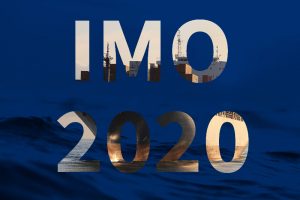January 2020 is a key date marked in red on sea transport calendars. Or should we say in green, as new environmental regulation limiting the emission of sulphur oxides comes into force. IMO 2020 is good news for the planet, but what is it and what implications will this have for the sector?
This regulation is approved by the International Maritime Organization that requires vessels to operate with a fuel sulphur content capped at 0.5% by weight. It aims to drastically reduce sulphur oxide emissions, which cause environmental pollution and destruction of the ozone layer.
In this regard, 2020 represents a fundamental step toward the goal involving decarbonisation of transport set for 2050. And it is an ambitious first change, given the current sulphur limit of 3.5% by weight.
3 ways of complying with IMO 2020
Time is ticking and shipping companies who still haven’t taken action are now in a race against time to adapt their fleets to this new regulation for reduced emissions before 1 January 2020. Below are three alternatives with their pros and cons that can be used to achieve this.
Changing over to sulphur-free fuel oil
Using fuel oil with a maximum sulphur content of 0.5% by weight, where production for this type of fuel is expected to increase dramatically to meet the sudden demand. Bear in mind that the so-called low-sulphur fuel oil (LSFO) has 1% sulphur by weight, which would not be sufficient. It would need to be Ultra Low Sulphur Diesel Fuel Oil (ULSFO), which has a sulphur content (0.1% almost zero) or, predictably, a mix of different types of heavy fuel oils offering quality for money to ships.
The downside is ensuring that the engines support the new type of fuel oil as well as the fact that the price will be higher, at least until new standards are established.
Scrubbers to debug traditional fuel
Also known as gas scrubbers, scrubbers are atmospheric emission purification systems. These are tanks installed on ships that neutralise the most contaminating substances, which in this case would be sulphur oxide.
The major advantage is how it allows you to continue using fuels with a high concentration of sulphur. The biggest obstacle is how expensive it is, due to its installation costs and a period of up to six weeks, something that results in losses and that can affect the transport of goods on a global scale. There is a great deal of uncertainty about the future availability of fuel oil with a high sulphur content (HSFO) and its price.
Alternative fuels
A third way is to get rid of fuel oil altogether and move directly towards using other types of fuel with a low or zero sulphur content. The most viable alternative at the moment is liquefied natural gas (LNG) that not only allows for a 100% reduction in sulphur oxides, but also 90% of nitrogen oxides and a significant portion of CO2 emissions. Other type of cleaner fuels such as biofuels or even electricity could also be considered, but with more complicated rates of return with current technology.
IMO 2020: Advantages and Disadvantages
There is no doubt that the new regulation represents a challenge for the sea transport and logistics sector. Risky future decisions will have to be made, due to the great amount of uncertainty about fuel prices and possible changes in regulations.
In the short term, freight rates for international sea transport are expected to increase with the application of different surcharges to cover the necessary changes. Proper planning for each logistics operation will become more important than ever to obtain competitive rates for importers and exporters in relation to this situation.
However, the sector is becoming more and more environmentally aware and it is the time to take advantage of this to ensure cleaner and more sustainable freight transport. A new vision that respects the planet and in line with what is demanded by society.


